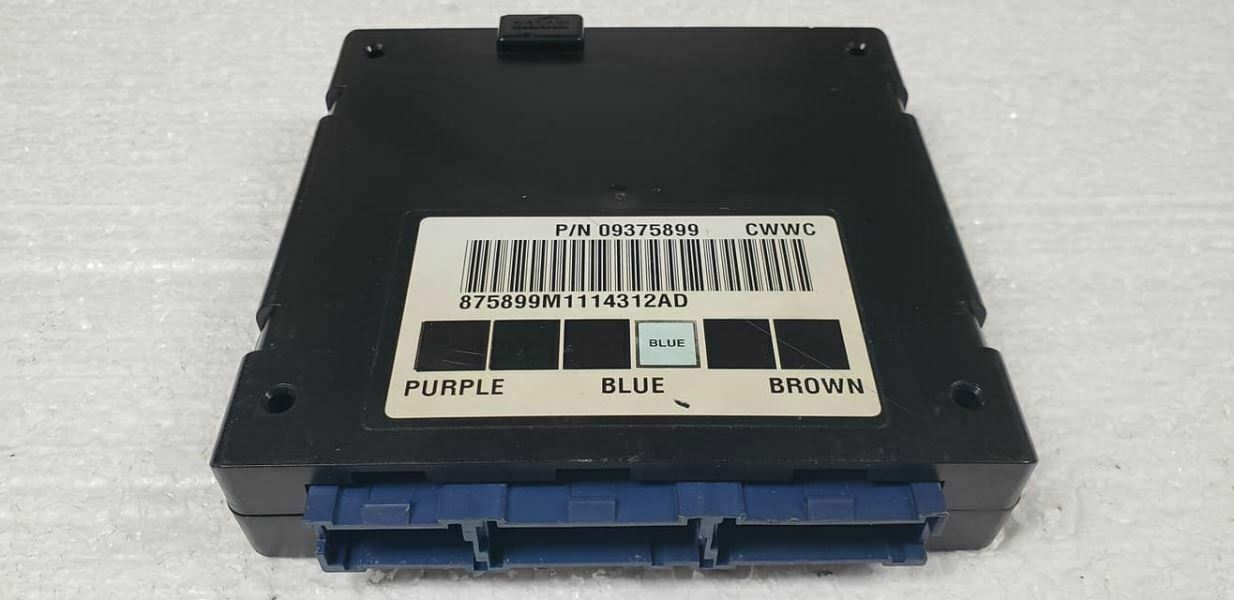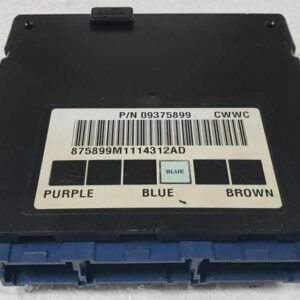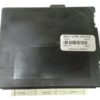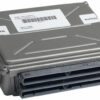Restore Your Truck’s Brain and End Electrical Frustration
If you’re dealing with a 2001 GM truck or SUV that seems to have a mind of its own—with flickering lights, malfunctioning power windows, or a security system that won’t cooperate—you’re not alone. After more than two decades in the garage, I’ve seen these symptoms countless times, and they almost always point to a failing Body Control Module (BCM). This isn’t just an annoyance; it’s the central command center for your vehicle’s comfort and security features. When it fails, it can make your reliable truck feel unpredictable. This 2001 Tahoe BCM is the definitive, hassle-free solution to get your vehicle back to factory-spec performance.
We take the guesswork and dealership expense out of the equation. Unlike a standard replacement part that requires costly programming tools, this BCM arrives at your door fully programmed to your vehicle’s specific Vehicle Identification Number (VIN). Simply provide us with your VIN after purchase, and we’ll flash the module with the latest GM software updates. This ensures seamless communication with your truck’s other systems right out of the box.
Case Study: A Tricky Diagnosis
A customer brought in his 2001 Silverado 1500 last month with a classic case of electrical chaos. The radio would turn on and off, the dome light wouldn’t work, and his power locks were completely unresponsive. He had already replaced the battery and checked all the fuses. After connecting my scan tool, I noticed a slew of communication error codes pointing toward the BCM. A failing BCM can create these ‘ghost’ problems that seem unrelated. We installed a VIN-programmed module just like this one, and within an hour, every single issue was resolved. It’s a testament to how critical this single component is for the vehicle’s overall function.
Is Your Truck Showing These BCM Failure Signs?
- ✔ Erratic or non-functional power windows, door locks, or mirrors.
- ✔ Interior or exterior lights that stay on, flicker, or won’t turn on at all.
- ✔ The security or anti-theft light is flashing, preventing the engine from starting.
- ✔ The horn honks randomly or doesn’t work when pressed.
- ✔ Inaccurate or dead gauges on the instrument cluster.
- ✔ The radio or climate control system behaves unpredictably.
- ✔ Communication error codes (U-codes) stored in the system.
Your Straightforward BCM Installation Guide
Replacing your 2001 Tahoe BCM is a manageable job for a confident DIYer. Follow these steps carefully for a successful installation. Remember, safety is paramount.
- Safety First: Disconnect the negative terminal from your vehicle’s battery and wait at least 10 minutes to allow all systems to power down completely.
- Locate the Module: The BCM is typically located on the driver’s side, under the dashboard to the left of the steering column. You may need to remove a lower dash panel for access.
- Disconnect and Remove: Carefully unplug the electrical connectors from the old BCM. They have locking tabs that need to be depressed. Once disconnected, unbolt or unclip the old module from its mounting bracket.
- Install the New BCM: Mount your new, pre-programmed BCM in the same location and securely reconnect all electrical harnesses. Ensure each connector clicks firmly into place.
- Reconnect Power: Reattach the negative battery terminal.
- CRITICAL Post-Installation Procedures: After installation, two key procedures are often required. First, to clear the airbag warning light, a professional scan tool must be used to perform the ‘Setup SDM Primary Key in BCM’ procedure. Second, some vehicles may need a brake pedal position sensor recalibration for proper brake light function and safety. If you are not equipped to perform these steps, assistance from a qualified technician is strongly recommended.
Verified Fitment for Your GM Truck or SUV
This module is a direct replacement for part numbers 09375899, 9392990, 09370249, and 19180223. It is guaranteed to fit the following 2001 models:
CHEVROLET SILVERADO 1500 PICKUP 01 (Body Control, LH dash)
CHEVROLET SILVERADO 2500 PICKUP 01 (Body Control, LH dash)
CHEVROLET SILVERADO 3500 PICKUP 01 (Body Control, LH dash)
CHEVROLET SUBURBAN 1500 01 (Body Control, LH dash, ID 9392990, 4×2)
CHEVROLET SUBURBAN 2500 01 (Body Control, LH dash, ID 9392990)
GMC SIERRA 1500 PICKUP 01 (Body Control, LH dash)
GMC SIERRA 2500 PICKUP 01 (Body Control, LH dash)
GMC SIERRA 3500 PICKUP 01 (Body Control, LH dash)
GMC YUKON 01 (Body Control, LH dash, ID 9392990, 4×2)
GMC YUKON XL 1500 01 (Body Control, LH dash, ID 9392990)
GMC YUKON XL 2500 01 (Body Control, LH dash, ID 9392990)
Frequently Asked Questions
What exactly does a Body Control Module do?
The BCM is a computer that manages the non-engine-related electronic systems in your truck. This includes power windows, locks, interior and exterior lighting, the security system, wipers, and more. It’s the central hub for passenger comfort and convenience features.
Do I really need to provide my VIN?
Yes, providing your VIN is essential. We use it to program the BCM with the correct software and settings for your specific vehicle’s options. This ensures it works correctly right out of the box and prevents compatibility issues.
Will this fix my flashing security light and no-start problem?
In many cases, yes. A common failure mode for the GM Passlock security system involves the BCM. If the BCM is faulty, it can prevent the vehicle from starting and cause the security light to flash. This part is often the correct fix for that specific issue.
What happens if I don’t do the airbag or brake pedal procedures?
If you don’t perform the ‘Setup SDM Primary Key’ procedure, the airbag warning light will likely remain on, and the supplemental restraint system may not function correctly in an accident. Failing to recalibrate the brake pedal sensor (if required for your vehicle) could result in improper brake light operation, which is a significant safety hazard.
Is this a difficult part to replace myself?
The physical replacement is straightforward for someone with basic mechanical skills. It’s mostly removing a dash panel and swapping the module. The most challenging part is the post-installation electronic procedures, which require a high-level diagnostic scan tool. Many DIYers choose to install the part themselves and then have a local shop perform the final resets.



